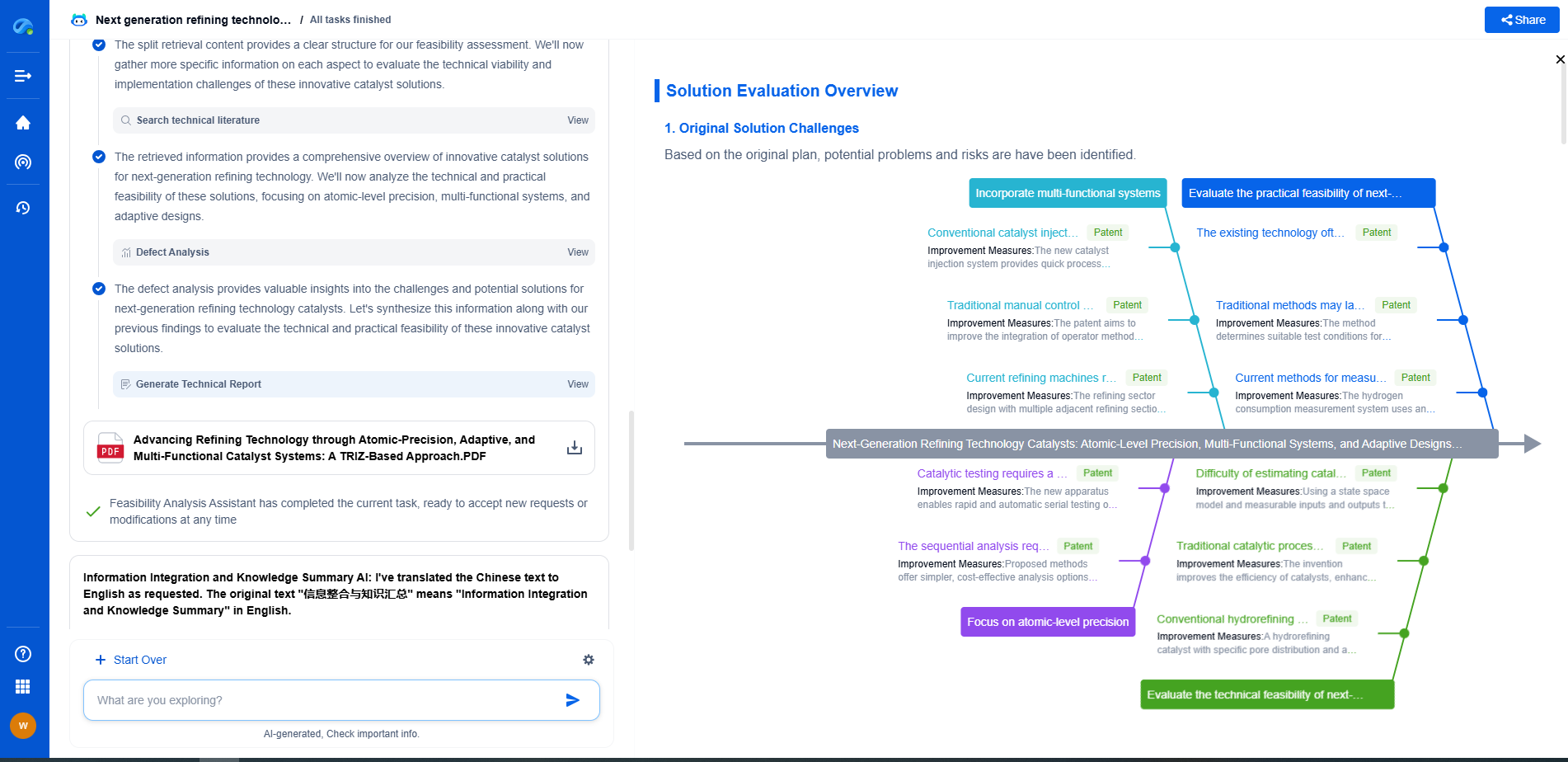Alignment techniques for multi-element optical systems using interferometry
JUL 15, 2025 |
Multi-element optical systems have become instrumental in various fields, from astronomy and telecommunications to medical imaging and military applications. These systems comprise multiple optical elements such as lenses, mirrors, and prisms, which must be precisely aligned to achieve optimal performance. Misalignment can lead to aberrations, reduced resolution, and ultimately, a failure to meet the designed specifications. One of the most effective methods for aligning these systems is interferometry, a technique that utilizes the interference of light waves to measure optical path differences. This article explores various alignment techniques for multi-element optical systems using interferometry, emphasizing the importance of accuracy and precision in modern optical applications.
Understanding Interferometry
Before delving into specific alignment techniques, it is crucial to understand the basic principles of interferometry. Interferometry involves the use of coherent light sources, typically lasers, to produce interference patterns when the light waves overlap. These patterns, known as fringes, provide valuable information about the optical path length differences between the beams. By analyzing these fringes, one can detect minute misalignments and make the necessary adjustments to the optical components.
Types of Interferometers Used in Optical Alignment
There are several types of interferometers commonly used for aligning multi-element optical systems, each with its own set of advantages. The Michelson interferometer is one of the most widely used due to its simplicity and effectiveness in measuring phase differences. The Twyman-Green interferometer, a variation of the Michelson, is particularly useful in testing optical components such as lenses and mirrors. Another popular choice is the Mach-Zehnder interferometer, which is often used in systems where beam splitting and recombining are necessary. Each of these interferometers can be tailored to specific alignment tasks, ensuring high precision and accuracy.
Alignment Techniques Using Interferometry
1. **Wavefront Analysis**: One of the primary applications of interferometry in optical alignment is wavefront analysis. By examining the interference pattern, engineers can determine deviations from the ideal wavefront, which indicate misalignments of optical elements. Software algorithms can then be used to interpret these patterns and guide the realignment process.
2. **Fringe Pattern Interpretation**: The interpretation of fringe patterns is a critical step in the alignment process. A perfectly aligned system will produce straight, evenly spaced fringes, whereas misalignments will manifest as curved or distorted fringes. By adjusting the optical components to correct these distortions, alignment can be achieved with high precision.
3. **Real-Time Feedback**: Interferometry offers the advantage of real-time feedback during the alignment process. As adjustments are made, changes in the fringe pattern can be observed instantaneously, allowing for immediate corrections. This dynamic approach ensures that the alignment process is both efficient and effective.
4. **Alignment Tolerances**: Determining the appropriate alignment tolerances is essential to ensure the system meets its performance requirements. Interferometry provides the capability to measure alignment errors down to fractions of a wavelength, allowing for precise control over the tolerances.
Challenges and Considerations
Despite its advantages, aligning multi-element optical systems using interferometry can present several challenges. Environmental factors such as temperature fluctuations, vibrations, and air turbulence can affect the accuracy of interferometric measurements. Consequently, it is vital to conduct alignments in controlled environments to minimize these influences. Additionally, the complexity of the optical system and the number of elements involved can complicate the alignment process, requiring skilled technicians and sophisticated equipment.
Conclusion
Interferometry remains a powerful tool for aligning multi-element optical systems, offering unparalleled precision and accuracy. By utilizing a range of interferometric techniques—such as wavefront analysis, fringe pattern interpretation, and real-time feedback—engineers can ensure that these systems perform to their full potential. As optical technologies continue to advance, the role of interferometry in optical alignment will undoubtedly grow, facilitating further innovations across diverse scientific and industrial fields.
From interferometers and spectroradiometers to laser displacement sensors and fiber optic probes, the field of optical measurement is evolving at light speed—driven by innovations in photonics, MEMS integration, and AI-enhanced signal processing.
With Patsnap Eureka, biomedical innovators can navigate cross-domain insights in optics, electronics, and biocompatible materials, while discovering IP trends across academic, clinical, and commercial datasets.
💡 Fuel your next breakthrough in optical health tech—start using Patsnap Eureka to unlock deep insights today.
- R&D
- Intellectual Property
- Life Sciences
- Materials
- Tech Scout
- Unparalleled Data Quality
- Higher Quality Content
- 60% Fewer Hallucinations
Browse by: Latest US Patents, China's latest patents, Technical Efficacy Thesaurus, Application Domain, Technology Topic, Popular Technical Reports.
© 2025 PatSnap. All rights reserved.Legal|Privacy policy|Modern Slavery Act Transparency Statement|Sitemap|About US| Contact US: help@patsnap.com

